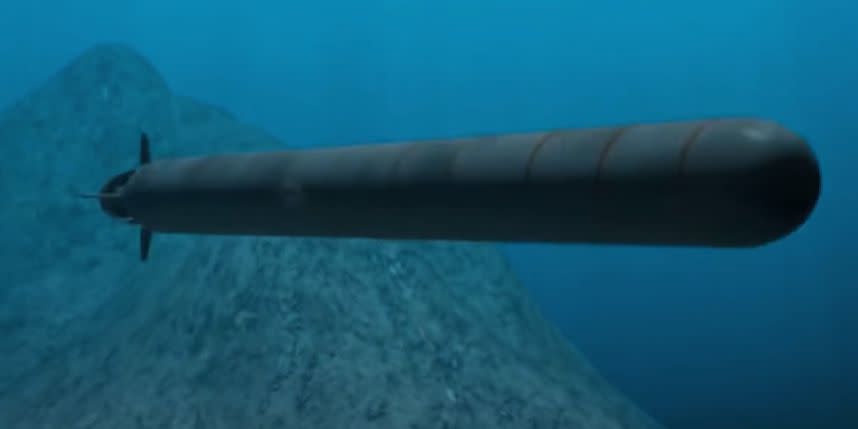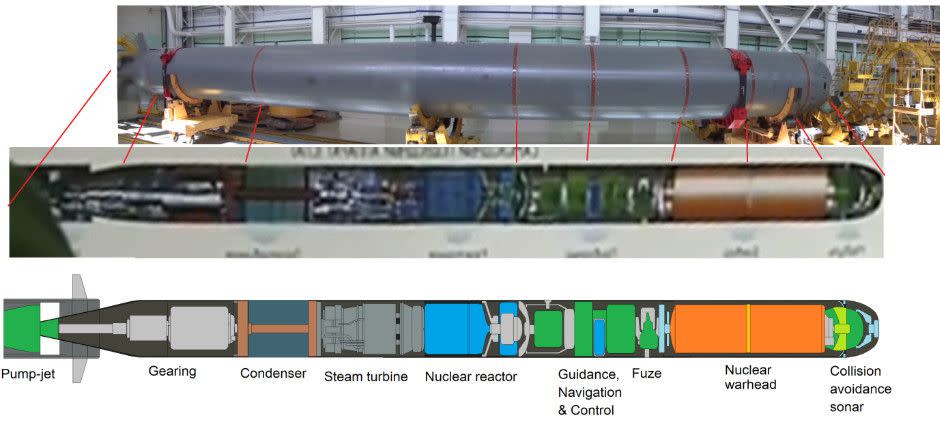Russia’s Nuclear Tsunami Apocalypse Torpedo is Named 'Poseidon'

Russia’s dreaded nuclear torpedo, designed to nuke entire coastal cities into oblivion and trigger tsunamis, has been sighted in tests at sea. Once thought a hoax, internet researchers have tracked development of the system all the way back to 2008. The weapon was recently named “Poseidon” after the Russian military polled the public for a new name.
The weapon, formerly known as “Status-6” and KANYON, was recently renamed Poseidon. Poseidon beat out two other names, Aurora and Skif, in a naming contest held by the Russian Ministry of Defense. Unfortunately The Worst Weapon Ever was not part of the contest, but it should have won handily.

Poseidon, documented by submarine researcher HI Sutton and author of World Submarines: Covert Shores Recognition Guide, is the largest torpedo ever developed. Sixty five feet long and 6.5 feet wide, the nuclear-powered torpedo is designed to cross entire oceans before detonating a thermonuclear warhead against an enemy coastal target such as city or naval base. The weapon is carried by special submarine and there are proposals for launching them from capsules tied to the seabed, waiting to be unleashed.
Early reports claimed Poseidon had a 100 megaton thermonuclear warhead. This warhead was twice as large as Tsar Bomba, the largest bomb ever dropped. Enough to destroy entire coastal cities and cause further devastation inland by triggering artificial tsunamis, laden with radioactive fallout. To make matters even worse, the warhead was reported to be “salted,” laced with radioactive isotopes that would make contaminated regions dangerous and uninhabitable for years.
Sutton scales back Poseidon’s warhead to “just” 2 megatons, but that would still be sufficient to destroy major metropolitan areas and trigger waves contaminated with radioactivity. Russia is also touting the torpedo as capable of attacking enemy fleets. While the warhead is certainly large enough to destroy an entire U.S. carrier battle group, there is some question how the Russian weapon would actually locate a moving enemy fleet.
Sutton also notes that development of the weapon can be traced back to 2008, when the Russian Navy took delivery of a unique submarine, Sarov, that will test and ultimately carry the gigantic torpedo.
According to the Covert Shores website, Poseidon is now estimated to be capable of speeds up to 70 knots, up from 56 knots, which translates to 80 miles an hour on land. This is faster than U.S. nuclear powered attack submarines and their anti-ship homing torpedoes, limiting a defender’s options against an incoming Poseidon missile. The weapon also operates at depths of up to 3,280 feet, far deeper than U.S. Navy submarines.
Poseidon is believed to be a second-strike weapon, ensuring that any country that stages a surprise nuclear attack on Russia is devastated in return. The weapon is designed to circumvent U.S. ballistic missile defenses meant to shoot down incoming missiles by taking an underwater route.
Source: Covert Shores
('You Might Also Like',)


